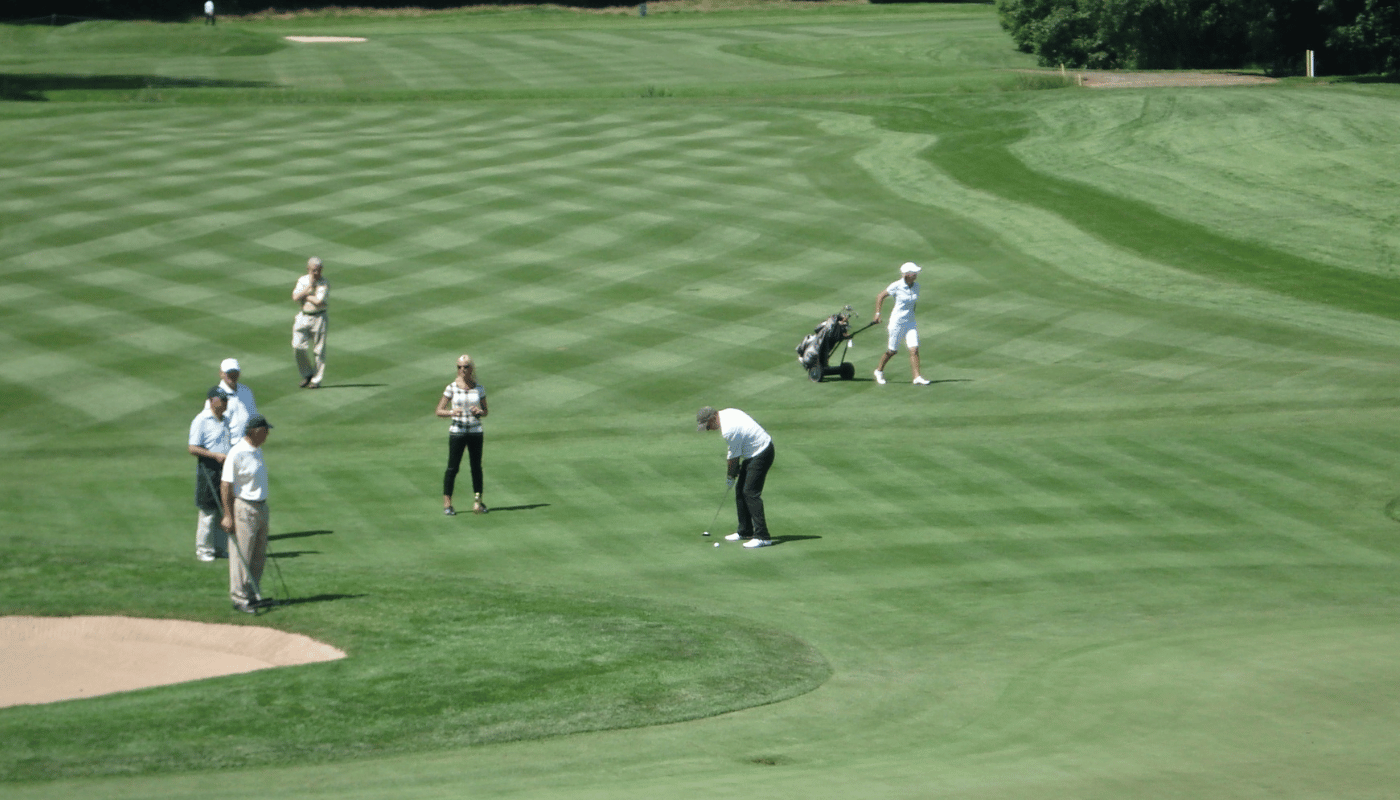Top golf nets play an essential role in golf facilities, serving as a protective barrier for both players and bystanders. These nets are typically positioned at the top of driving ranges or recreational golf locations to prevent balls from leaving the designated hitting area. Whether you’re at a traditional driving range or a modern TopGolf facility, these nets ensure that golf balls are safely contained, minimizing the risk of accidents or damage outside the course.
In terms of design, top golf nets are made from durable materials that can withstand high-speed golf balls. The height and distance of the nets are specifically chosen to suit the layout of the facility, ensuring that balls do not exceed the bounds of the range. The question that many people ask, especially newcomers to these facilities, is “how far is the top golf net?” Understanding the typical distance of these nets is crucial for both safety and optimal gameplay experience.
The size of the net, in terms of height and distance, varies depending on the location and its purpose. For example, a standard driving range may use a net that is positioned 60 to 100 feet above the ground, while a larger facility like TopGolf might have taller and farther-reaching nets to accommodate more powerful shots. These nets are designed to provide a safe environment for golfers to practice their swings without the fear of errant balls escaping the area.
Typical Distance of Top Golf Nets
The distance of top golf nets varies based on the facility’s type and size, as well as its intended purpose. How far is the top golf net typically? While each facility has its unique specifications, there are some common measurements you can expect to find at most driving ranges and recreational golf locations.
Generally, top golf nets range between 60 and 100 feet in height, although some high-end facilities like TopGolf may feature nets that extend upwards of 150 feet. The height of the net is designed to prevent balls from leaving the driving range, ensuring both player safety and the containment of errant shots.
List of Common Top Golf Net Distances:
- 60 to 100 feet (typical for smaller driving ranges)
- 100 to 150 feet (seen in larger recreational golf facilities)
- Up to 200 feet (TopGolf and other larger, high-tech venues)
In terms of horizontal distance, the net’s reach from the teeing area is often several hundred feet. This distance can be anywhere from 200 to 500 feet, depending on the facility’s layout and the distance players are expected to hit the ball. For example, TopGolf venues, with their expansive layouts, require longer nets compared to traditional driving ranges. These nets are specifically positioned to cater to long drives while maintaining the safety of the surrounding area.
Why Does the Distance of the Top Golf Net Matter?
The distance and height of the top golf net are crucial for ensuring a safe, enjoyable, and effective golfing experience. The net’s primary role is to contain golf balls within the range and protect both players and spectators from errant shots. Understanding how far is the top golf net is essential for players who want to practice their swings without worrying about balls leaving the area.
One of the key factors in determining the net distance is the type of facility. For example, at TopGolf, where players are hitting balls over a large area with advanced technology, the top nets need to be positioned farther away to ensure that balls stay within the designated area. If you’re looking to optimize your game experience, you might also be interested in learning how to remove the speed limiter on an electric golf cart. In contrast, smaller or more traditional driving ranges may not require such a vast area for their nets. These locations typically feature nets that are closer to the teeing areas, where shots are expected to be of shorter distances.
The height of the net also plays a significant role. As golf balls can reach extreme speeds when struck, especially with powerful clubs like drivers, the net needs to be tall enough to stop the balls from going over. A net that is too low might fail to capture high-speed shots, causing balls to travel beyond the facility’s perimeter.
In addition to safety, the placement of the net is critical for creating a proper environment for practice. A net that is positioned too far back could cause players to feel disconnected from the action, while one that is too close may restrict the type of shots they can make. Therefore, finding the right balance in the net’s distance and height ensures players can practice various shots with confidence.
Comparison with Other Golf Net Systems
While top golf nets are an essential part of many driving ranges and recreational golf centers, they are not the only netting systems in place. There are several different types of golf net systems designed for specific needs, and each has its own set of specifications regarding how far the net extends and how high it reaches.
For example, traditional driving range nets are generally lower than those found in larger, high-tech facilities like TopGolf. These traditional nets may be positioned at a height of 60 feet and extend several hundred feet to ensure balls are contained within the facility. However, this height is often suitable for less powerful shots or beginners who aren’t hitting long drives.
Comparison of Golf Net Systems
| Facility Type | Net Height | Horizontal Distance | Average Shot Distance |
| Traditional Driving Range | 60-80 feet | 200-300 feet | 150-250 yards |
| TopGolf Facility | 100-150 feet | 300-500 feet | 200-300 yards |
| Miniature Golf or Smaller Ranges | 30-50 feet | 100-150 feet | 50-100 yards |
In comparison, a more advanced system like the one at TopGolf requires a much higher net, often 100 feet or more. This is necessary due to the design of these venues, where players typically hit long drives with high ball speeds. In such cases, the net needs to be taller and farther from the teeing area to catch errant balls.
Safety Considerations for Golf Nets
The distance and height of golf nets are not just a matter of convenience; they are essential for ensuring safety at golf facilities. The primary purpose of the top golf net is to prevent golf balls from escaping the driving range, which can be dangerous to both players and people in the surrounding areas. The exact positioning of the net plays a significant role in minimizing risks.
One of the key safety concerns is the speed and trajectory of golf balls. A golf ball, when hit with a driver, can travel at speeds exceeding 170 mph, which means that without the proper netting, a ball can easily escape the range and pose a risk to bystanders or property. The correct placement of the top golf net ensures that all shots—whether they are powerful drives or softer approach shots—are contained within the range.
The distance of the net is also crucial when considering the safety of surrounding areas. In urban areas, where golf ranges are often located near roads, homes, or buildings, golf nets need to be particularly high and far-reaching to keep balls from hitting unintended targets. In rural or open spaces, the nets can be less extensive, but still, the basic principle remains: the further the net is from the teeing area, the better the protection it provides.
Facilities that have been built or renovated with safety as a priority often have taller nets to accommodate the growing popularity of more powerful golf swings, which means that the need for distance is even greater. For example, if a range is near a residential area, the safety standards may require a higher and farther net, especially for ranges that attract golfers of varying skill levels.
How to Assess the Quality of a Top Golf Net
When trying to determine at a specific facility, understanding the quality and durability of the net itself is also essential. The design and materials of the top golf net can affect its overall performance and safety features. High-quality nets are able to absorb the force of the golf balls without risk of breakage or wear.
There are several factors to consider when assessing the quality of a golf net:
- Material: The material used for the netting plays a significant role in its durability. High-grade materials like nylon, polyester, or polyethylene are commonly used in top golf nets, as they are strong enough to withstand high-impact balls. Nylon is particularly favored for its stretchability, which helps prevent the net from tearing under pressure.
- Mesh Size and Thickness: The size of the mesh in the netting also impacts its effectiveness. Smaller mesh sizes can prevent balls from escaping more easily, while larger mesh sizes might allow certain shots to slip through. Additionally, the thickness of the netting ensures that it won’t easily fray or break over time.
- Height and Stretching Capabilities: A good top golf net should be designed to stretch to accommodate varying ball speeds and distances. High-quality nets are able to handle more extreme conditions, including strong winds or wet weather, without losing their ability to contain balls.
- Structural Support: The frame supporting the net is just as important as the net itself. A well-designed frame ensures that the net remains in place and remains taut, reducing the risk of sagging or failure, especially during high-speed shots.
By considering these factors, you can better understand how effective and safe a top golf net is at any given facility. This also gives context to how far is the top golf net, as longer nets with superior construction are typically found at well-funded facilities.
Conclusion
In conclusion, understanding how far is the top golf net is essential for both golfers and facility owners. These nets are designed to provide safety, contain errant balls, and ensure a smooth golfing experience. Their distance, height, and quality are determined by multiple factors, including the type of facility, target audience, and location, which together dictate the best net design for each situation.
Whether you’re practicing your swing at a small driving range or enjoying a game at a high-tech venue like TopGolf, the importance of a well-placed and well-constructed top golf net cannot be overstated. The right distance and quality of the net ensure that golfers can focus on their game without worrying about their balls leaving the safety of the designated area. Additionally, it ensures the safety of everyone around, preventing potential damage or injury caused by errant shots.
For golf facilities, choosing the right net is more than just about how far it stretches; it’s about creating an environment that is both enjoyable and safe for golfers of all skill levels. For golfers, understanding these distances can help manage expectations during practice and play, especially when aiming for certain targets.
Finally, as golf technology continues to evolve and courses expand, the design of these nets may continue to improve, adapting to the needs of players. While the net may be a simple feature at first glance, it plays a key role in making golf a safe and enjoyable activity.

